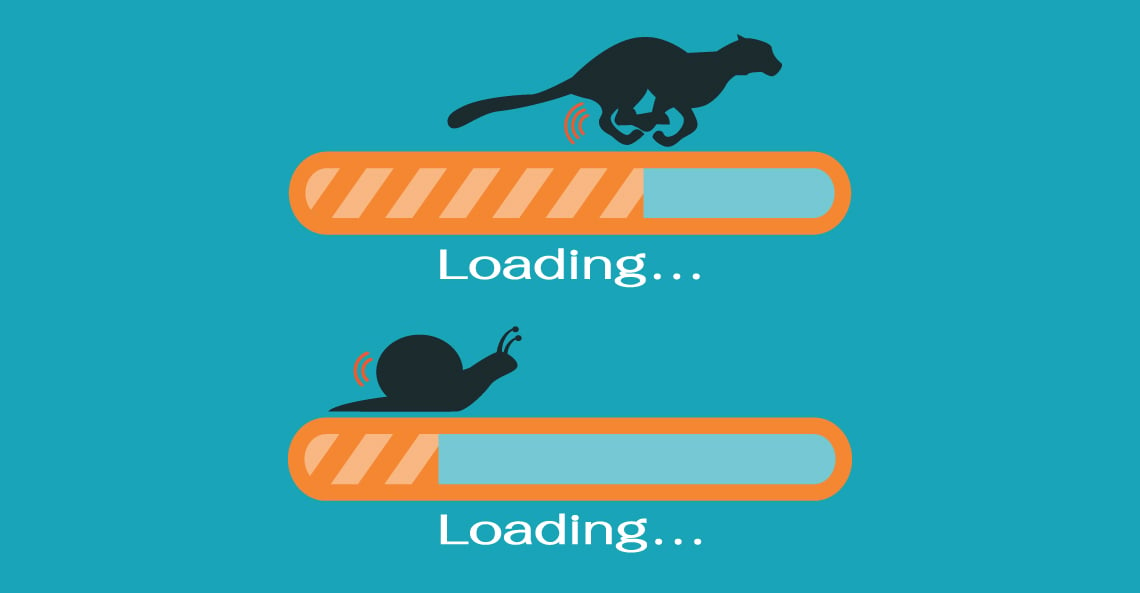
WordPress performance part 2 – basic steps to a faster blog
I am continuing the two-part series on WordPress performance – focussing on why you need a fast website and how to get a faster blog on a basic level:
- Introduction
- Basic steps to a faster blog
In this post, I will be focussing on a few actionable steps to get your WordPress website optimised and running a lot faster. So let’s get right into it. WordPress is a great system that is packed with features and is highly extensible through the plethora of plugins that are available (mostly for free). So you’re probably asking, “What’s the catch?”
Well, to be honest, there isn’t really a problem with having so much power at your fingertips, but as the saying goes: With great power comes great responsibility (said by someone). So I’ve come up with three tips on taking that super powerful piece of open source software and making it an efficient super powerful piece of open source software.
1. Efficient themes for a faster blog
This is probably the most important part of getting a fast loading website. WordPress themes range from crappy free themes to highly involved premium themes. Although, some free themes are hidden gems and some of the premium themes going around are a waste of money.
When it comes to themes, the reason they’re so important is because they are what the client sees, and most likely waits for, in most cases. Themes control things like design, imagery, text placement, user interaction and basically the whole user experience. So you can imagine that if a theme is poorly made, you can have a potential sinkhole in your online strategy.
To put it down as non-technically as possible, I would have to break it up into the following three sub-points:
a. Imagery
WordPress probably has one of the best media management tools out there. This includes a fully featured thumbnail generator of all required sizes in a theme. Themes that aren’t created properly will use images that are way too big in dimensions for the required area. Imagine a 1920×1080 pixel image being used in a space that only requires 640×360? The user will then have to wait for the loading of that image.
Make sure the theme uses the best (smallest) image possible to make sure the total download size on the user’s side is as small as possible.
b. CSS (cascading style sheets)/Javascript
These two static resources (static in resource, dynamic in experience) are probably the best thing to have ever come to the web. Pretty much every theme and plugin has its own set of CSS and Javascript that adds to a “better” user experience. Unfortunately, that’s also where the problem lies.
Each CSS and Javascript file that is loaded on the front-end requires download time and when there are quite a few of them those kilobytes add up. Another problem is that browsers only load a certain number of resources at one point, which means there could be a long queue waiting to be loaded. Consolidating CSS and Javascript into single files will mean that the browser may have a slightly larger file to load, but the user won’t have to wait for each one to load whilst in a queue.
c. Database queries
This is probably the most technical side of a theme design. WordPress runs off a database, so inevitably the database would have to be queried to get information for the website. The general rule of thumb is that database reads are light (to a point) and database writes are heavy.
No theme should do many (if any) database writes whilst loading a front-end page. If the theme is doing a lot of writes then you’re probably going to have a dead-slow theme that will just get worse over time. On top of that, a theme that does tons of database reads on each page load will also be slow, and get slower over time.
This is where it’s very important to use a quality theme or have one developed by a good company or digital agency.
2. Efficient plugins for a faster blog
This is almost identical to the need for efficient themes and carries similar issues with imagery, static files and database queries. You want to find highly-rated plugins developed by reputable WordPress plugin developers to make sure you have a plugin that is created with optimisation in mind.
Once again, making sure you have a plugin that is created properly will make sure your website loads faster.
3. WordPress-ready hosting for a faster blog
This could be a touchy subject for some, but your host could make or break your website. One of the issues with shared hosting is that there could be thousands of websites hosted on a medium-powered web server. This means that your website is sharing resources with websites, which you have no control over. Imagine a single-lane freeway with 10 000 cabs trying to get passengers to a whole lot of stores with one of them being yours – not ideal.
There are many great hosts out there and by doing some research you will find many with great reviews. Make sure the host you currently have or choose to have supports WordPress and also doesn’t overload their own servers.
Another little caveat is that a lot of servers support the WordPress requirements, but don’t have the correct setup for WordPress to run. Please contact us if you want help on this.



This is actually interesting. You’re a very skilled blogger.
I have joined your feed and look forward to seeing more of your wonderful posts.
Also, I’ve shared your website on my sites!